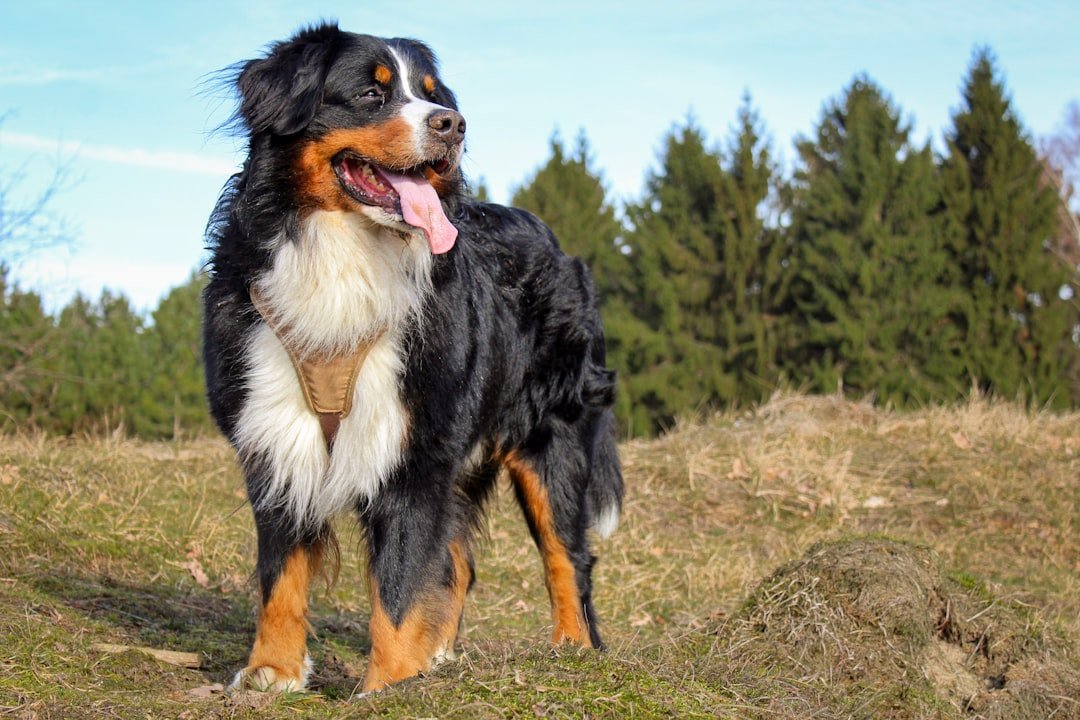Looking for the best family dog that’s gentle with children, playful in the yard, and protective when it counts? This guide rounds up 25 kid-friendly dog breeds—from big, gentle giants to small, low-shedding companions—each with temperament, behavior, protective traits, and practical care tips so your family can choose with confidence. You’ll see clear stats like size, exercise needs, and grooming level, plus evidence-based habits (socialization, enrichment, routine) that reliably build great canine citizens.
If you want lovable, safe, and trainable family dogs, bookmark this list and pick the breed that matches your home, kids’ ages, energy level, climate, and budget—then use the care tips to lock in great manners for life.
Quick safety note: always supervise dog–child interactions, teach kids polite handling (no ear/tail pulling; let sleeping dogs lie), and use positive-reinforcement training from day one.
#25 – Pembroke Welsh Corgi
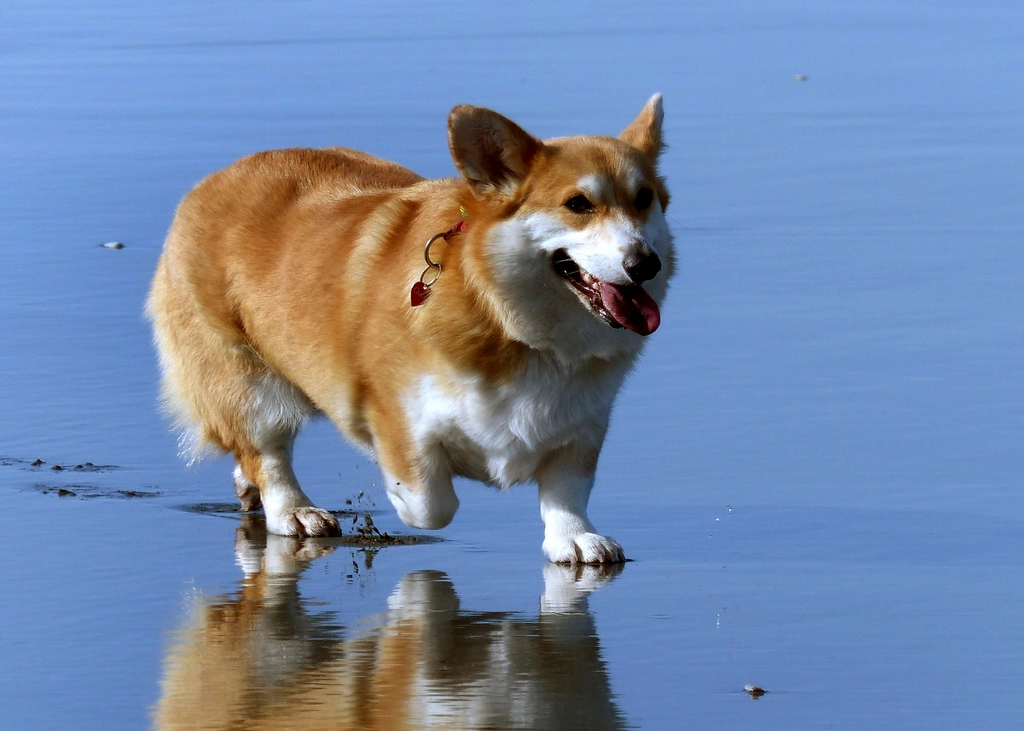
With their big smiles, short legs, and fluffy bums, Corgis bring endless charm to family life. Originally bred as herding dogs, these compact companions (10–14 kg) are known for their intelligence and loyalty, making them excellent pets for families with school-age kids.
Temperament & behavior. Corgis are bright, trainable, and eager to be part of family activities. They have playful personalities but can also be bossy if not given clear rules. Their herding instincts mean they may try to nudge or “round up” children, which is endearing but should be managed with training.
Why great for kids (and protection). Corgis form strong attachments to their family and are natural watchdogs. They’re vigilant alerters—barking at unusual noises or strangers near the house—yet they’re not overly aggressive, making them safe companions around children.
Care tips. Keep them at a healthy weight to avoid back strain. Provide 45–60 minutes of daily exercise (walks and games like fetch), use ramps to prevent jumping, and practice impulse control training to help them focus their energy productively.
#24 – Saint Bernard

Known as the “gentle giant,” Saint Bernards (54–82+ kg) are legendary for their patience and loyalty. These Swiss mountain dogs are iconic rescue animals, but at home, they’re best known as affectionate family companions.
Temperament & behavior. Saint Bernards are calm, steady, and deeply bonded with their people. Despite their size, they’re generally very gentle, even with small children, and love being part of family life. They can be a little clumsy indoors but thrive on companionship.
Why great for kids (and protection). Their size alone is a deterrent to strangers, but their personalities are patient and tolerant. They supervise children instinctively and provide a comforting sense of security, often staying close during backyard play.
Care tips. Provide moderate daily exercise (40–60 minutes), regular brushing to manage their heavy coats, and avoid overheating in warm weather. Early manners training is crucial so their massive size doesn’t accidentally knock children over.
#23 – Great Dane
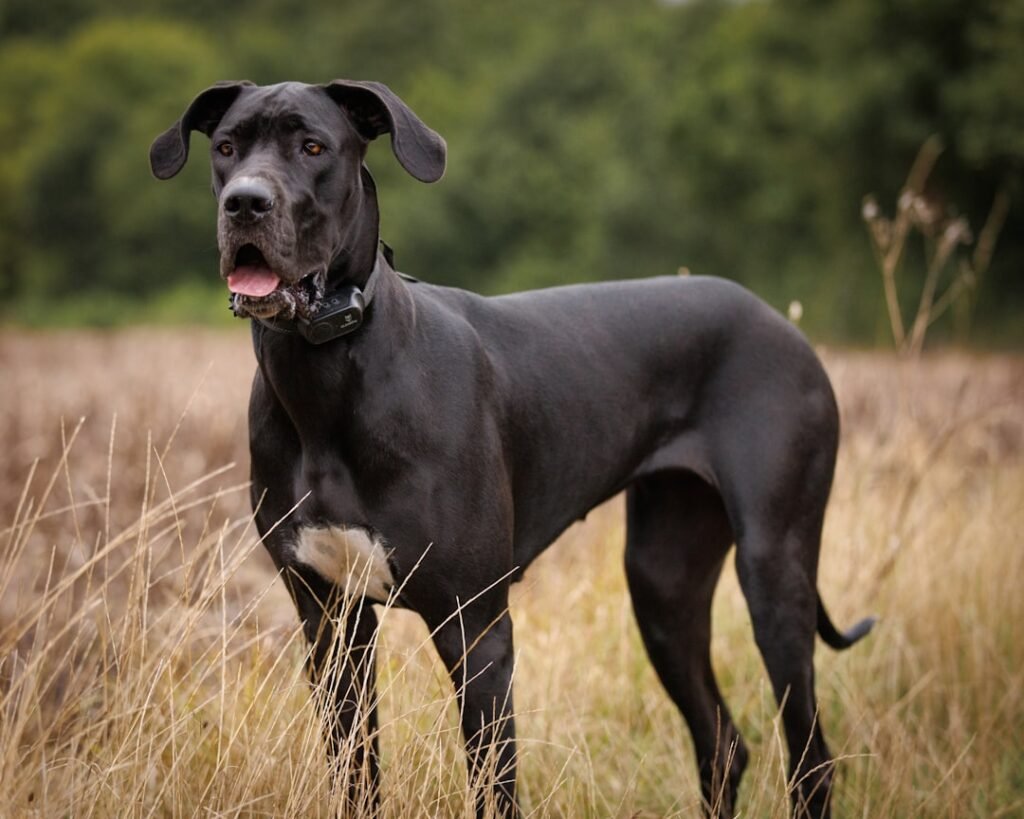
Introduction. Despite being one of the tallest dog breeds in the world (45–82 kg), Great Danes are famously gentle and affectionate. These “gentle giants” are known for their sweet, loving temperaments and strong bonds with children.
Temperament & behavior. Great Danes are calm indoors and love curling up with their families, often forgetting their size as they try to climb onto laps. They’re affectionate, loyal, and surprisingly easygoing for such a large breed.
Why great for kids (and protection). Their imposing presence is enough to make strangers think twice, yet with children, they’re soft and nurturing. Great Danes often position themselves between kids and strangers, serving as gentle guardians.
Care tips. Provide 40–60 minutes of exercise daily, feed in smaller meals to reduce the risk of bloat, and protect their joints with supportive bedding. Gentle obedience training helps them learn to manage their size around small children.
#22 – Whippet
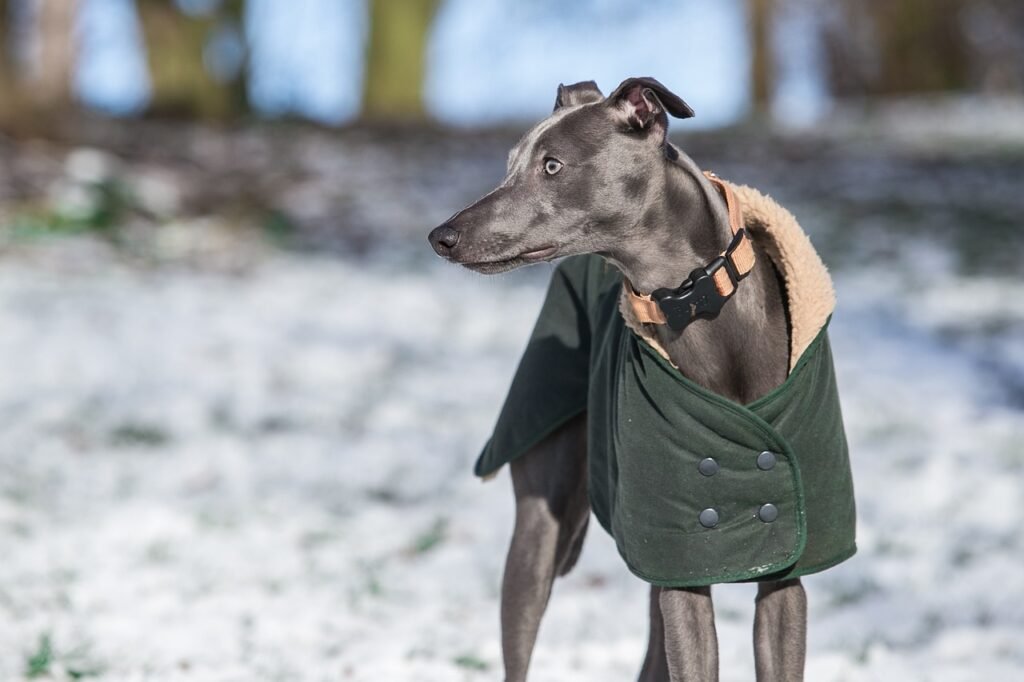
Introduction. Whippets may look like miniature Greyhounds, but behind their elegant frames (9–19 kg) are affectionate, quiet companions who adore their families. They balance bursts of outdoor speed with calm, snuggly personalities indoors.
Temperament & behavior. Whippets are sensitive, sweet-natured, and enjoy both playtime and quiet cuddles. They’re polite, adaptable, and usually get along well with children when socialized properly.
Why great for kids (and protection). Though not natural guard dogs, Whippets are gentle companions for kids and will alert bark when something unusual happens. Their calm nature makes them particularly good for families who want a low-noise, low-shedding pet.
Care tips. Offer two brisk play bursts or a sprint in a secure area each day, along with soft bedding to protect their lean bodies. In colder climates, Whippets need coats or sweaters to keep them warm during outdoor walks.
#21 – Shih Tzu
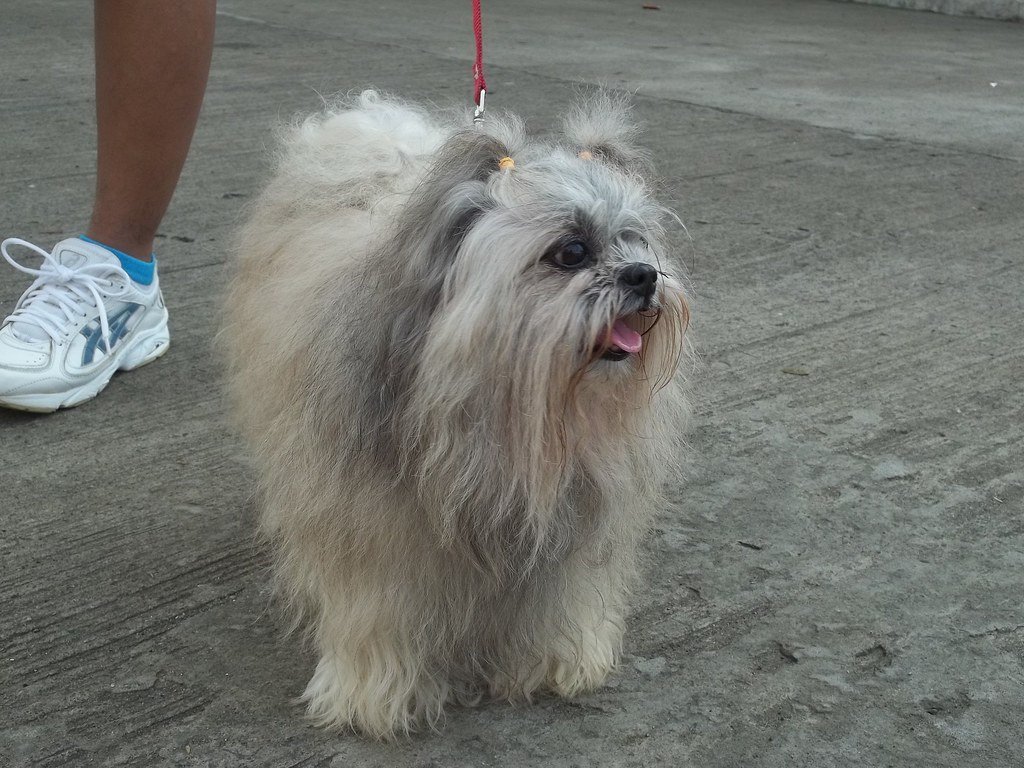
With their flowing coats and gentle eyes, Shih Tzus are true lap dogs that thrive on affection. Originally bred as companions for Chinese royalty, these small dogs (4–7.2 kg) are still prized for their calm and loving personalities.
Temperament & behavior. Shih Tzus are adaptable, friendly, and relatively low-energy. They enjoy gentle play sessions and cuddle time, making them perfect for younger children who prefer quiet companionship.
Why great for kids (and protection). Shih Tzus are sweet-natured and usually tolerant of respectful handling. While they’re not guard dogs, they will alert bark to let you know when someone’s at the door, providing a sense of security.
Care tips. Regular grooming and eye care are essential to prevent irritation. Provide short daily walks and use positive reinforcement training to reinforce calm, polite behavior around children.
#20 – Pug
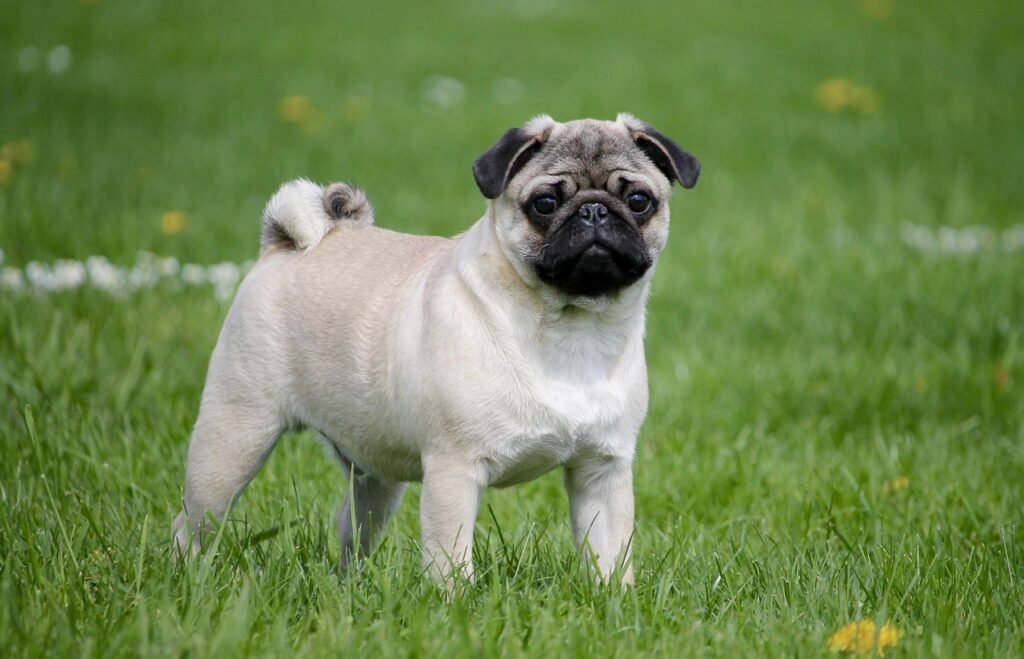
Among dogs for Families, pugs may be small in size, but they carry enormous personalities. Known for their wrinkled faces, curly tails, and goofy grunts, Pugs are the ultimate little clowns of the dog world. Families love them because they’re affectionate, funny, and always ready to be near their humans. Weighing just 6–8 kg, they’re great for apartment living and have a lifespan of 12–15 years when well cared for.
Temperament & behavior. Pugs are steady-natured and thrive on companionship. They are not overly energetic, making them easy for families with younger children to manage. They’re social butterflies who get along with almost anyone—kids, grandparents, or houseguests.
Why great for kids (and protection). Pugs are gentle and tolerant, which makes them perfect for kids still learning how to interact with dogs. They’re naturally observant and will bark or shadow the family when they sense something unusual, acting as tiny guardians without aggression.
Care tips. Pugs need short daily walks instead of long runs due to their flat faces. Keep them slim to prevent breathing strain, clean their facial folds regularly, and check their eyes often. Always use a harness instead of a collar to protect their airways.
#19 – Havanese
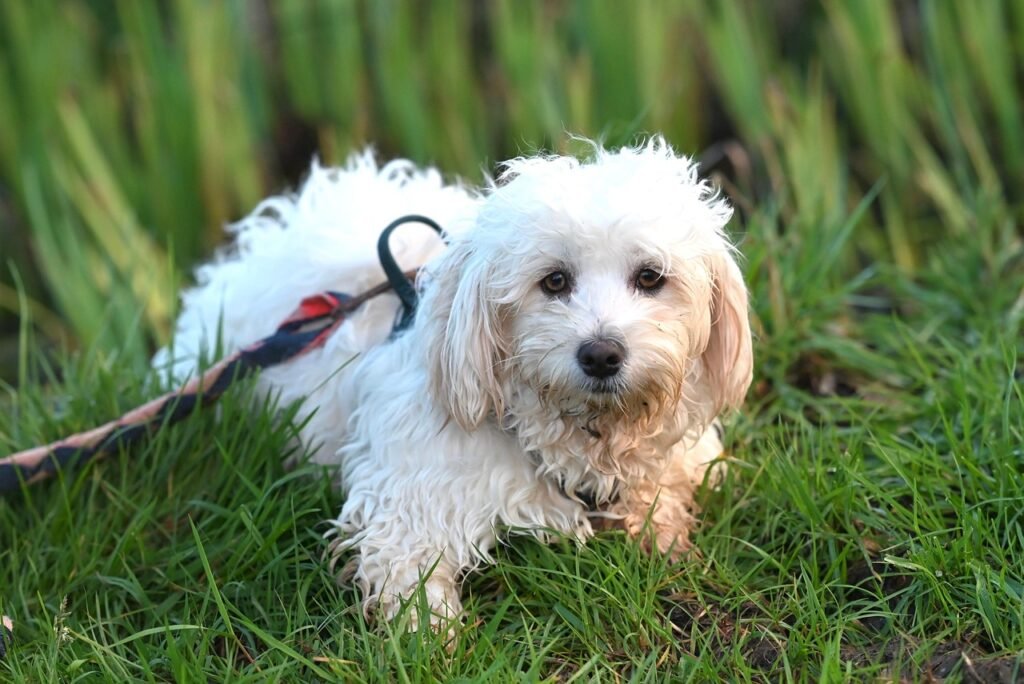
Known as the national dog of Cuba, the Havanese is a small but sturdy companion that thrives in family settings. These silky-coated dogs (4.5–7.3 kg) are affectionate, intelligent, and highly adaptable, making them ideal for homes both big and small. Their average lifespan ranges from 12–15 years.
Temperament & behavior. Havanese dogs are playful, sociable, and eager to please. They excel at learning tricks and love being in the middle of family activities. Their gentle nature makes them easy to train and great with respectful children.
Why great for kids (and protection). Havanese dogs adore kids and often act like little clowns to keep them entertained. While they’re not fierce guard dogs, they are naturally alert and will bark when strangers approach, giving families peace of mind.
Care tips. Brush their silky coats several times a week to prevent tangles, keep nails trimmed, and ensure 30–45 minutes of exercise daily. Training sessions with treats or games will help reinforce their confident, happy personalities.
Check out this article when choosing cute dogs: 33 Dog Breeds That Look Cute but Have Hidden Health Issues
#18 – Bichon Frise
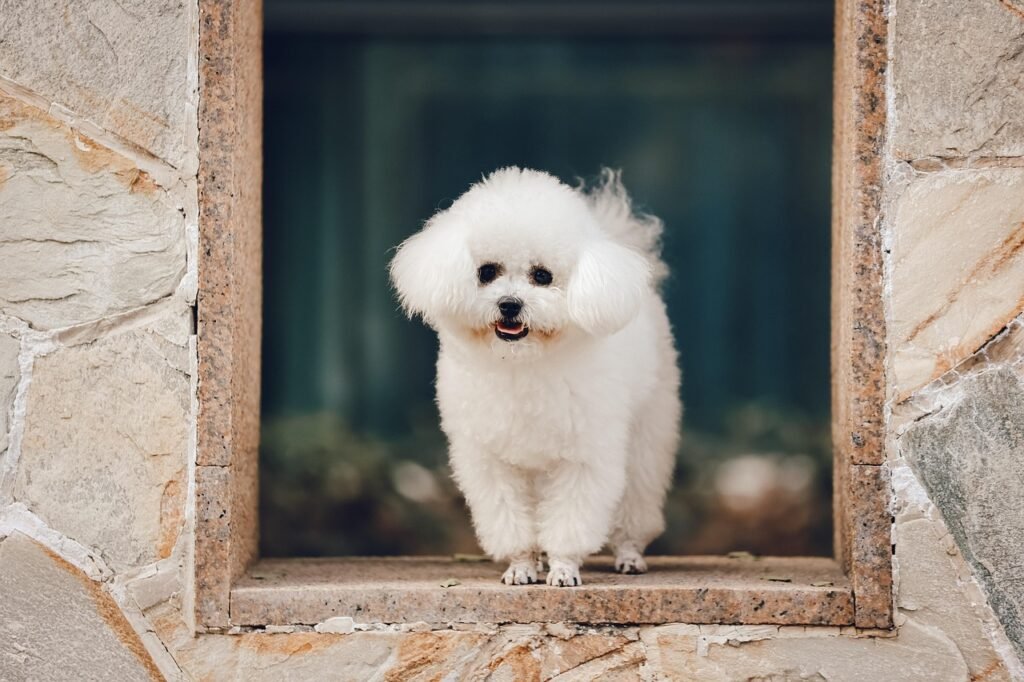
Introduction. The Bichon Frise is like a little ball of sunshine wrapped in cotton. With their fluffy white coats and cheerful personalities, Bichons bring joy wherever they go. These small dogs (5–8 kg) are ideal for families who want a happy-go-lucky pet with a lifespan of 12–15 years.
Temperament & behavior. Bichons are affectionate, adaptable, and thrive on being around people. They get along well with kids, strangers, and other pets, which makes them versatile companions for busy family households.
Why great for kids (and protection). Their small size makes them manageable for younger children, while their sturdy build prevents them from being too fragile. They’re polite watchdogs who will bark to alert their families, though they’re more likely to wag their tails at strangers than act defensively.
Care tips. Professional grooming every 4–6 weeks is essential, along with regular brushing at home to prevent mats. Provide 30–45 minutes of exercise daily and use positive reinforcement training to keep their cheerful energy focused.
#17 – Boston Terrier
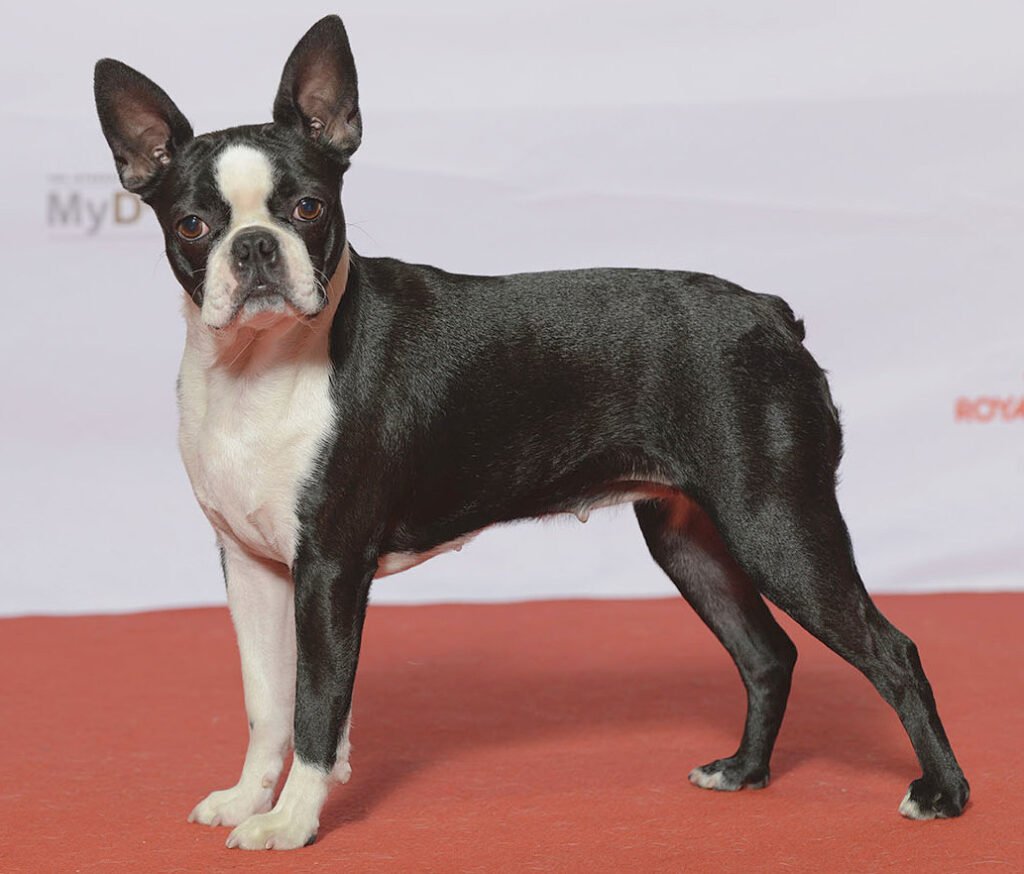
Introduction. Nicknamed the “American Gentleman,” Boston Terriers are compact little dogs with tuxedo-like markings and charming personalities. Weighing 7–11 kg and living about 11–13 years, they are playful companions that fit easily into city or suburban homes.
Temperament & behavior. Boston Terriers are lively, affectionate, and love spending time with their families. They balance bursts of playful energy with an ability to relax on the couch, making them suitable for families of all activity levels.
Why great for kids (and protection). Boston Terriers are sturdy enough for playful kids but small enough to be easily handled. They are social with most people but will bark to alert you when strangers arrive, giving them a light protective quality.
Care tips. Provide two to three short walks daily, along with interactive toys to keep them mentally engaged. Protect their eyes outdoors, use a harness instead of a collar, and keep them in cool environments to avoid breathing stress.
#16 – Cocker Spaniel (American)
With their long, silky ears and sweet, soulful expressions, Cocker Spaniels are among the most affectionate dogs you’ll ever meet. They’re medium-sized (9–14 kg) and live about 10–14 years, making them excellent long-term companions for families.
Temperament & behavior. Cockers are gentle, people-focused, and eager to please. They thrive on positive reinforcement and love structured routines. Their affectionate nature makes them especially good with children, provided they’re handled respectfully.
Why great for kids (and protection). Cockers enjoy playing gently with children and form deep bonds with their families. While they aren’t aggressive, they will bark to alert you when someone approaches, offering a polite form of watchfulness.
Care tips. Routine grooming and ear care are critical to prevent infections. Provide 45–60 minutes of exercise daily and reinforce polite behaviors like calm greetings. Their love of play can be channeled into fetch or gentle tug-of-war with kids.
#15 – English Springer Spaniel

Known for their cheerful spirit and boundless enthusiasm, English Springer Spaniels are medium-sized dogs (18–25 kg) who thrive on being part of family activities. With a lifespan of 12–14 years, they’re often described as “forever puppies” thanks to their joyful personalities.
Temperament & behavior. Springers are affectionate, outgoing, and eager to please. They do best in families who can give them both mental and physical stimulation. Their adaptability makes them a good match for children of all ages.
Why great for kids (and protection). Springers love games like fetch and are gentle during play, making them safe around children. They are also excellent watchdogs, alerting families when strangers arrive but rarely showing aggression.
Care tips. Provide at least 60 minutes of daily exercise, including walks, fetch, and scent-based games. Brush their coats weekly and clean their ears regularly to prevent infections. Reinforce impulse control commands like stay and leave it to polish manners
#14 – Australian Shepherd
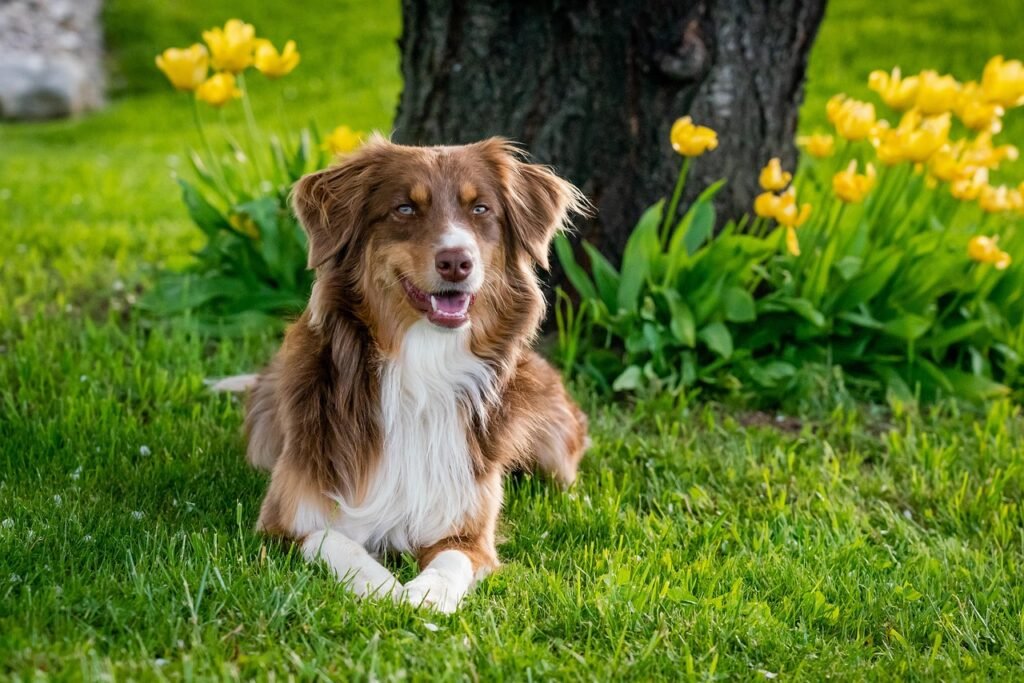
Highly intelligent and strikingly beautiful, Australian Shepherds (16–32 kg) are energetic herding dogs with strong family bonds. With a lifespan of 12–15 years, they are best suited for active households that love outdoor activities.
Temperament & behavior. Aussies are quick learners and thrive when given tasks. They are affectionate with their families but require clear leadership and mental challenges to stay balanced.
Why great for kids (and protection). Australian Shepherds are loyal, devoted, and naturally protective. They may gently herd children to keep them safe, and their watchfulness makes them reliable guardians without being overly aggressive.
Care tips. Give them at least 90 minutes of daily exercise, including agility training, fetch, or hiking. Regular grooming keeps their coats healthy, and early socialization prevents overprotective or overly herding behaviors.
#13 – Vizsla

Often called “velcro dogs,” Vizslas are affectionate sporting breeds (20–30 kg) that form deep emotional bonds with their families. With lifespans of 12–14 years, they’re energetic, sensitive, and thrive on constant companionship.
Temperament & behavior. Vizslas are lively, trainable, and love being near their people. They’re affectionate lap dogs indoors but energetic athletes outdoors, making them versatile family pets.
Why great for kids (and protection). Their loyalty and protective instincts make them excellent companions for children. Vizslas tend to stay close and alert, positioning themselves near kids in uncertain situations.
Care tips. Provide 60–90 minutes of daily exercise—running, hiking, or fetch. Training should include obedience and impulse control, while cuddle time should not be overlooked—these dogs need affection as much as activity.
#12 – Irish Setter
With their flowing red coats and joyful personalities, Irish Setters (24–32 kg) bring both beauty and energy into a family. Known for their sunny dispositions, they typically live 12–15 years.
Temperament & behavior. Irish Setters are playful, outgoing, and people-oriented. They enjoy active households and love to run, making them great for kids who spend a lot of time outdoors.
Why great for kids (and protection). Setters are confident dogs who enjoy playing with children. Their alert bark and bold stance make them good watchdogs while still being too friendly to be threatening.
Care tips. Provide 90 minutes of exercise daily, split into long walks, play sessions, and running time. Weekly grooming is important to keep their coats free of mats. Scent and fetch games are great ways to burn energy.
Want to know more about loving dog breeds? Check this out: 20 Dog Breeds With The Most Incredibly Loving Personalities
#11 – Bernese Mountain Dog
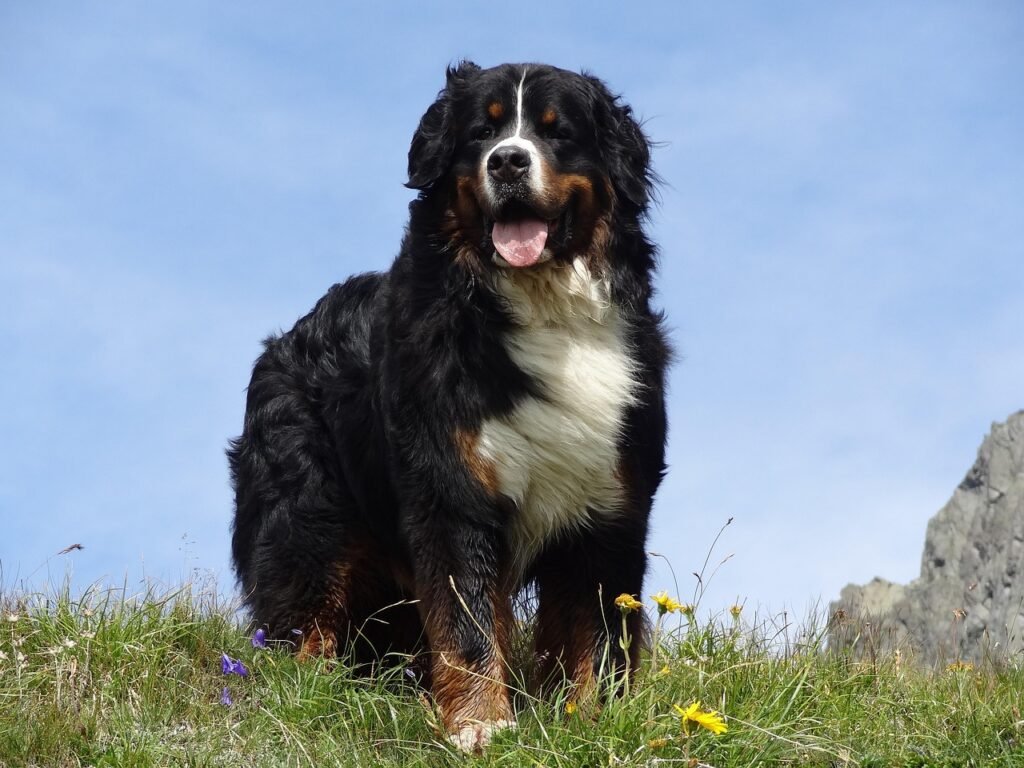
Gentle, loyal, and fluffy, Bernese Mountain Dogs are beloved as “gentle giants” of the family dog world. These large, tri-colored beauties (32–52 kg) usually live 7–10 years and thrive in homes where they can be close to their people.
Temperament & behavior. Berners are calm, affectionate, and steady. They’re happiest when surrounded by their family and are particularly good with children thanks to their gentle nature.
Why great for kids (and protection). Bernese Mountain Dogs are tolerant and patient with kids. Their protective streak means they’re often content to supervise outdoor play and remain alert to approaching strangers.
Care tips. Provide 45–60 minutes of low-impact daily exercise. Regular brushing is important to manage their heavy coats, and early socialization helps keep them confident and well-mannered.
#10 – Newfoundland
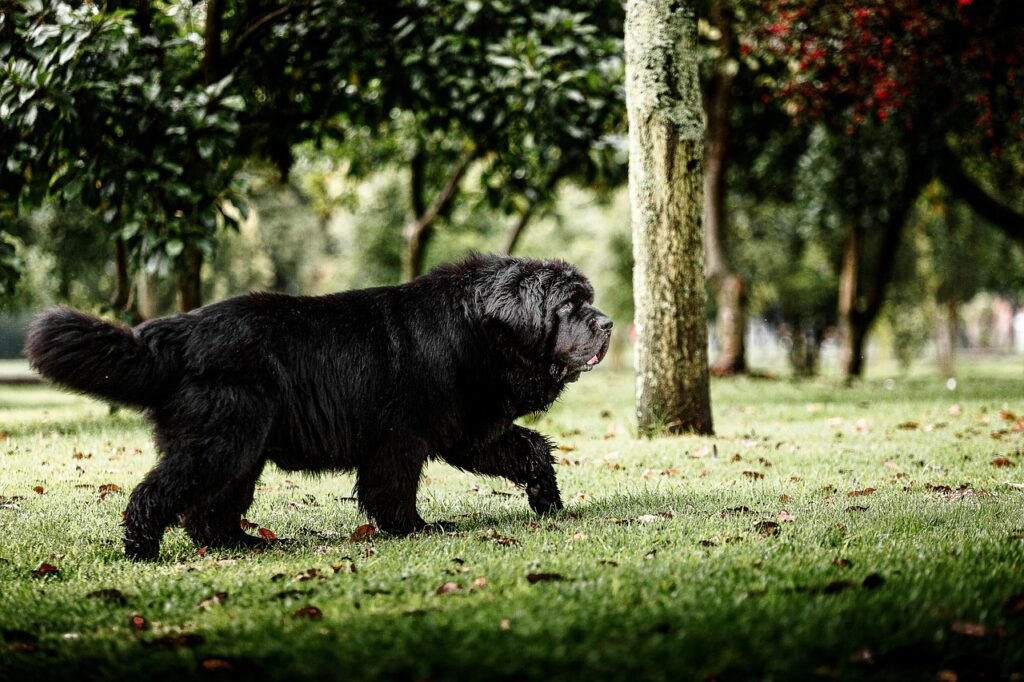
Nicknamed the “nanny dog,” the Newfoundland is a true gentle giant with a famously sweet and protective nature. Weighing between 45–68 kg and living 8–10 years, Newfs are calm, nurturing dogs that adore being around children and are often compared to big teddy bears.
Temperament & behavior. Newfoundlands are patient, steady, and incredibly tolerant. They rarely get ruffled, even in chaotic family environments, and they thrive on being part of the household. Their love of water and instinct to rescue make them unique family protectors.
Why great for kids (and protection). Known for their natural guardian instincts, Newfs often stay close to children during play and will even body-block strangers. Their sheer size deters threats, yet they remain gentle and safe around little ones.
Care tips. Provide 40–60 minutes of moderate daily activity, including walks and swimming if possible. Regular grooming is essential due to their thick double coat, and always monitor them in warm weather as they are prone to overheating.
#9 – Shetland Sheepdog
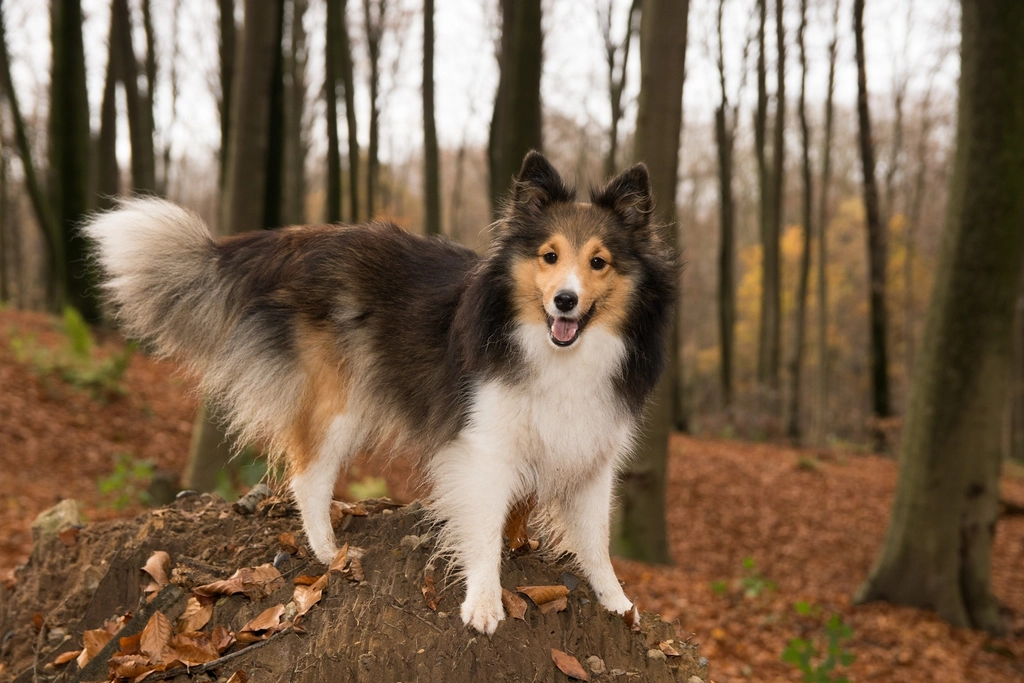
The Sheltie is often called a “mini Collie,” with all the intelligence and gentleness of its larger cousin packed into a smaller frame (6–12 kg). With lifespans of 12–14 years, Shelties are affectionate, agile, and tuned into family dynamics.
Temperament & behavior. Shelties are quick learners, highly trainable, and naturally affectionate. They love routine and excel at obedience and agility, which makes them especially fun for children who enjoy training games.
Why great for kids (and protection). Shelties are loyal and naturally watchful. They’ll bark early to alert the family of strangers and tend to hover near children outdoors, acting as gentle protectors.
Care tips. Daily brushing is a must, especially during seasonal shedding. Give them 45–60 minutes of exercise daily, including games that challenge their minds. Confidence-building training helps balance their sensitive side.
#8 – Collie (Rough or Smooth)
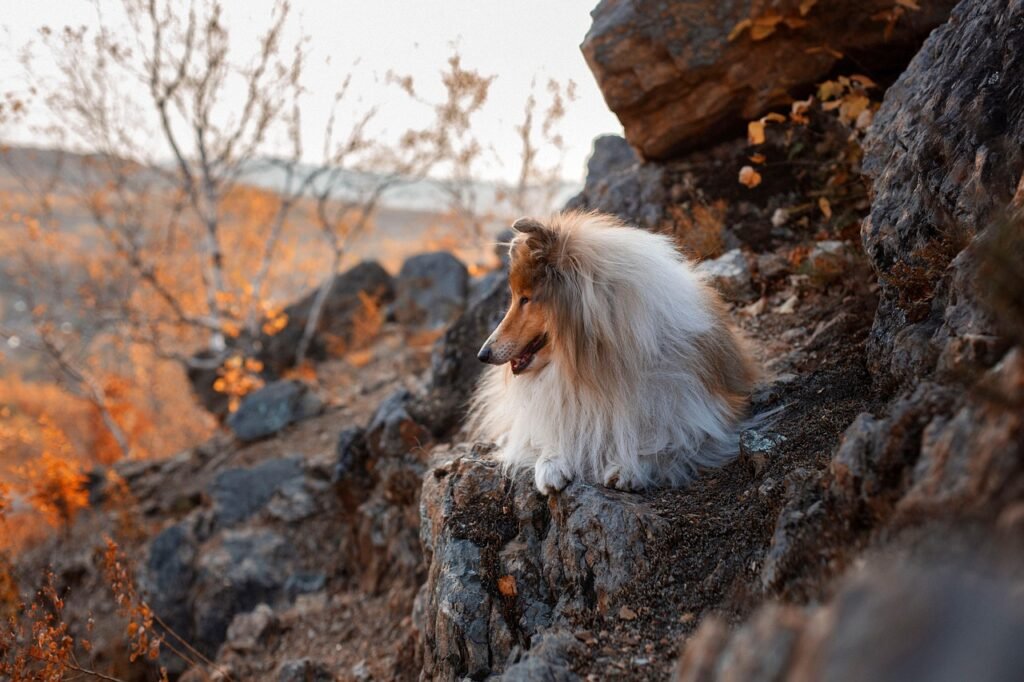
Immortalized by Lassie, the Collie is one of the most iconic family dogs in the world. Medium-large in size (22–34 kg) with lifespans of 12–14 years, Collies are loyal, gentle, and exceptionally patient with children.
Temperament & behavior. Collies are intelligent, easygoing, and deeply devoted. They love participating in family life and quickly adapt to the rhythms of the home. They’re also known for their empathy and ability to comfort children.
Why great for kids (and protection). Few breeds are as gentle and watchful with children as the Collie. Many will instinctively herd kids away from danger and stand guard when strangers approach.
Care tips. Provide 60 minutes of daily exercise. Rough Collies need regular brushing, while Smooth Collies are lower maintenance. Early training helps manage their herding instincts.
#7 – Boxer
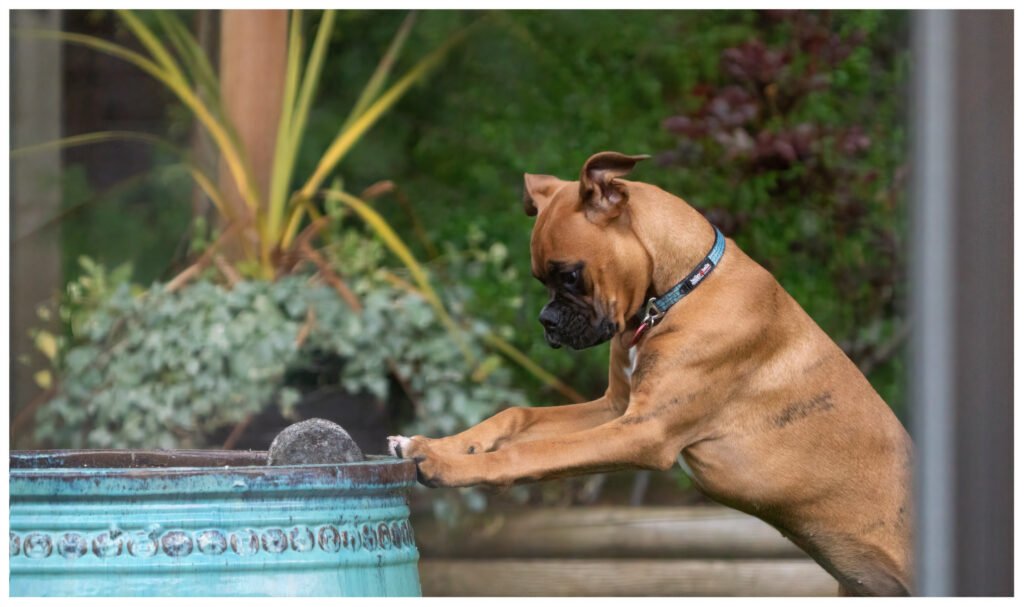
Boxers are wiggly, clownish athletes who bring joy and energy into any family home. Weighing 25–32 kg and living 10–12 years, they’re known as perpetual puppies thanks to their playful, loving personalities.
Temperament & behavior. Boxers are affectionate, people-centered, and highly energetic. They thrive on family activities and need clear boundaries to keep their exuberance in check.
Why great for kids (and protection). Boxers are famously gentle with children, often referred to as “kid dogs.” Their protective instincts are strong—they will bark, posture, and stand between kids and perceived threats.
Care tips. Give them 60–90 minutes of exercise daily, including structured games like fetch or tug. Socialize them early to prevent overexcitement, and reinforce calm behaviors when greeting guests.
#6 – English Bulldog
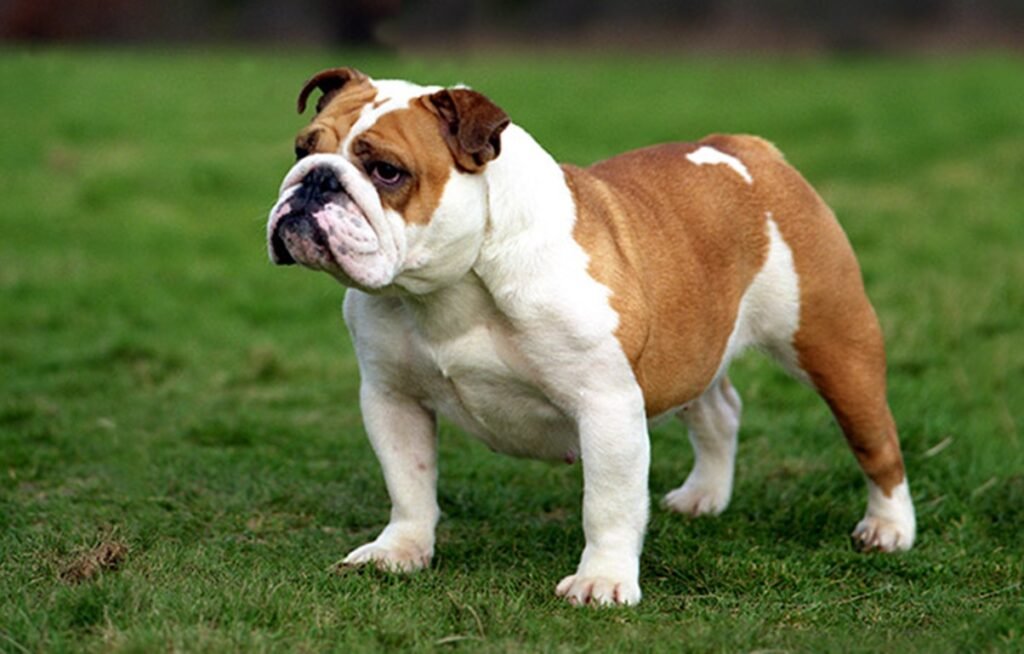
Stocky, wrinkly, and irresistibly charming, English Bulldogs (18–25 kg) are known for their easygoing personalities. Despite their tough appearance, they’re affectionate, goofy, and loyal companions, typically living 8–10 years.
Temperament & behavior. Bulldogs are calm, people-loving, and great indoor companions. They require minimal exercise compared to more athletic breeds, making them well-suited for families in apartments or small homes.
Why great for kids (and protection). Bulldogs are tolerant and sturdy, making them excellent around children. They’re also surprisingly protective, often body-blocking or standing close when strangers approach the family.
Care tips. Provide several short walks daily, avoid heat, and use a harness. Clean skin folds regularly to prevent infections and keep their weight under control to protect their joints and breathing.
#5 – Cavalier King Charles Spaniel
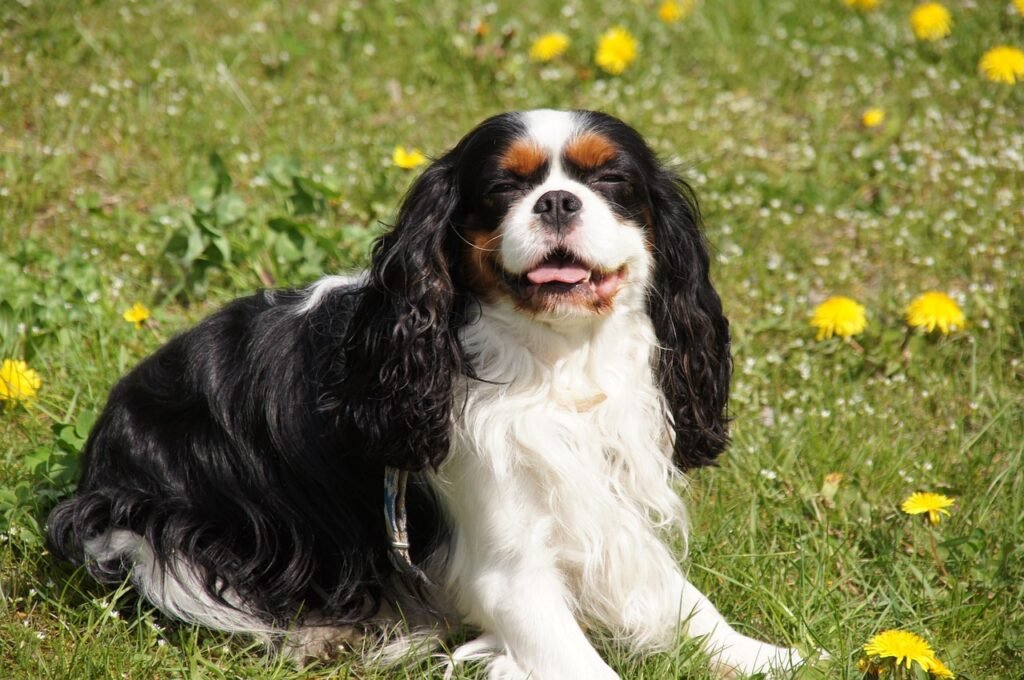
Known for their silky coats and soulful eyes, Cavaliers are gentle companions that fit easily into family life. Small in size (5.9–8.2 kg) with lifespans of 9–14 years, they’re sweet-natured and affectionate lap dogs.
Temperament & behavior. Cavaliers thrive on closeness with their families. They’re playful, gentle, and easygoing, making them suitable for both active and quiet homes.
Why great for kids (and protection). Cavaliers are wonderful with children, particularly younger kids who enjoy cuddles and gentle play. They’ll bark to alert the family of strangers but remain polite and non-aggressive.
Care tips. Provide short daily walks and plenty of snuggle time. Brush their ears and coats regularly, and keep up with vet checks for common heart and eye issues.
#4 – Beagle
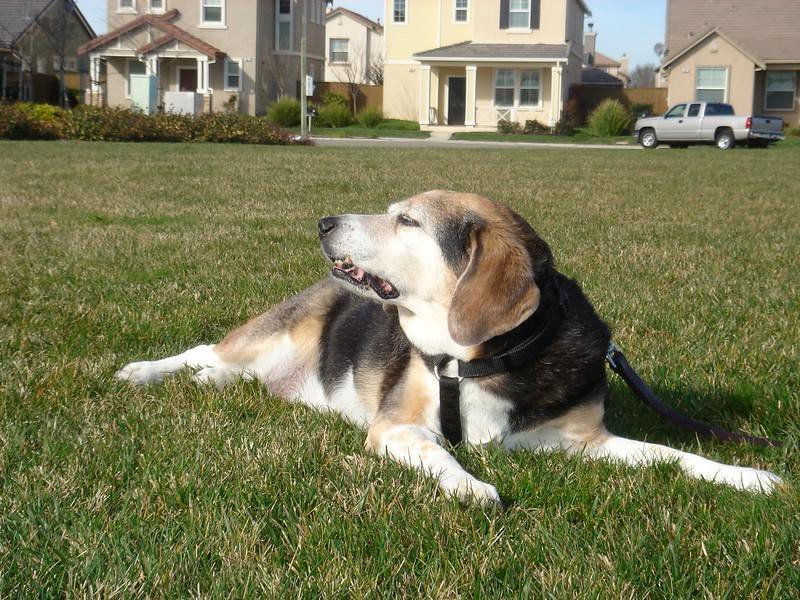
Beagles are merry little hounds (9–13.5 kg) with big hearts and even bigger personalities. Known for their floppy ears and soulful eyes, Beagles usually live 12–15 years and are beloved family dogs worldwide.
Temperament & behavior. Beagles are social, curious, and playful. They thrive on outdoor adventures and enjoy being part of a pack, making them ideal for busy families with children.
Why great for kids (and protection). Beagles are sturdy enough for active play and tolerant of children’s antics. Their loud, distinctive bark makes them reliable watchdogs, though they’re too friendly to be serious guard dogs.
Care tips. Provide 45–75 minutes of daily activity, including walks and “sniffaris.” Keep their ears clean and use puzzle feeders to manage their strong appetites.
#3 – Poodle (Standard or Miniature)
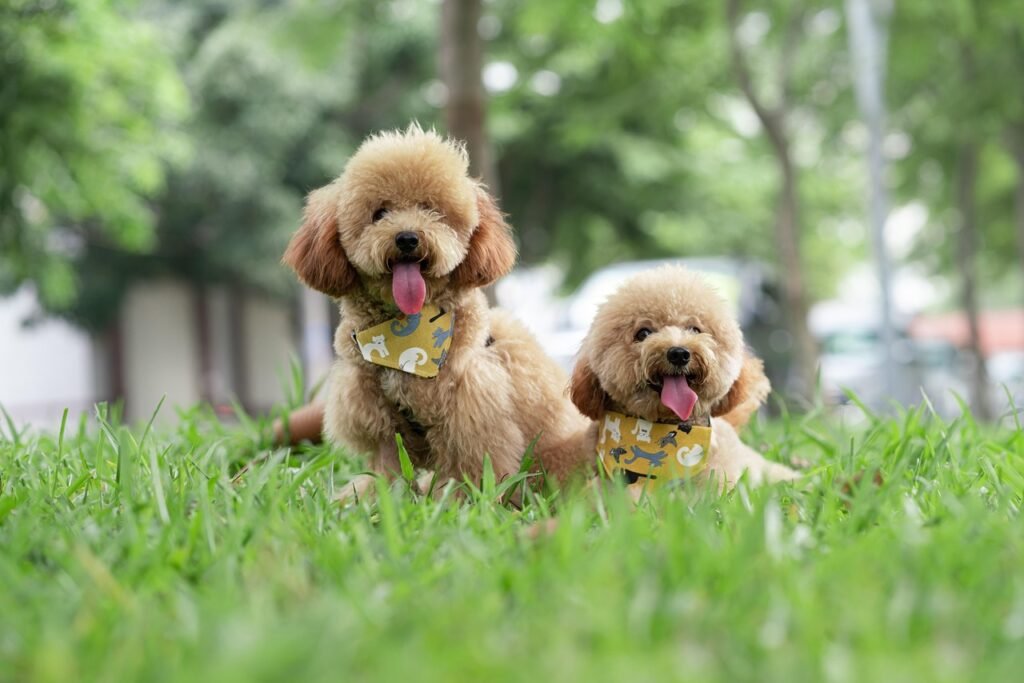
Poodles are among the most intelligent and versatile dogs. Whether Standard (20–32 kg) or Miniature (5–9 kg), these low-shedding dogs live 12–15 years and adapt easily to family life.
Temperament & behavior. Poodles are sensitive, trainable, and highly affectionate. They love structured play and are often described as having human-like emotional intelligence.
Why great for kids (and protection). Poodles bond deeply with their families and make excellent watchdogs. Standards in particular will position themselves protectively near children without being aggressive.
Care tips. Schedule professional grooming every 4–8 weeks. Provide 60–90 minutes of exercise daily, and keep them mentally stimulated with training games and puzzles.
#2 – Golden Retriever
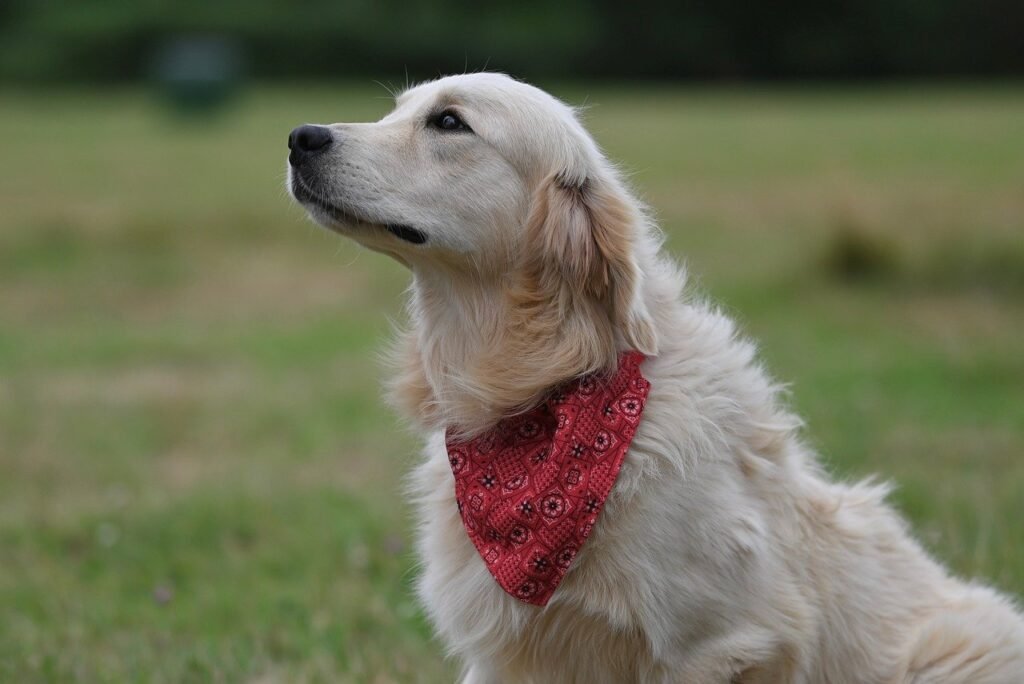
Golden Retrievers are the ultimate family dogs—gentle, loyal, and affectionate. Medium-large in size (25–34 kg), they typically live 10–12 years and are famous for their warm personalities.
Temperament & behavior. Goldens are patient, trainable, and social. They love games, walks, and simply being with their people. Their stable nature makes them particularly good for families with children of all ages.
Why great for kids (and protection). Goldens are famously tolerant and forgiving. They provide protective presence through alert barking and body-blocking, but remain safe and calm around children.
Care tips. Provide 60–90 minutes of exercise daily, brush regularly during shedding seasons, and keep their weight under control to protect joints and overall health.
#1 – Labrador Retriever

The Labrador Retriever tops the list as the ultimate family dog. With their goofy grins, wagging tails, and eager-to-please personalities, Labs are the most popular breed in the United States—and for good reason. Medium-large in size (25–36 kg) with lifespans of 10–14 years, they’re adaptable, affectionate, and endlessly loyal.
Temperament & behavior. Labs are biddable, highly trainable, and love to be part of family activities. They thrive on positive reinforcement and are both athletic outdoors and cuddly indoors.
Why great for kids (and protection). Labradors are gentle playmates who tolerate children’s antics with patience. At the same time, they’re protective in a non-aggressive way, barking or standing near children when they sense something unusual.
Care tips. Provide 60–90 minutes of exercise daily, including swimming, fetch, or walks. Keep them lean to protect their hips and elbows, and reinforce polite behaviors like not jumping when excited.
The Right Dog Makes Childhood Magical
The best dog breeds for families with kids combine patience, playfulness, and protection in one furry package. From gentle giants like the Newfoundland to energetic playmates like the Boxer, each breed offers unique qualities that can enrich family life. But the magic doesn’t come just from breed—it comes from consistent care, training, and supervision. When families invest in their dog’s wellbeing and teach kids respectful interaction, the result is a lifelong bond that shapes childhood in the best possible way.

Andrew Alpin from India is the Brand Manager of Doggo digest. Andrew is an experienced content specialist and social media manager with a passion for writing. His forte includes health and wellness, Travel, Animals, and Nature. A nature nomad, Andrew is obsessed with mountains and loves high-altitude trekking. He has been on several Himalayan treks in India including the Everest Base Camp in Nepal.

